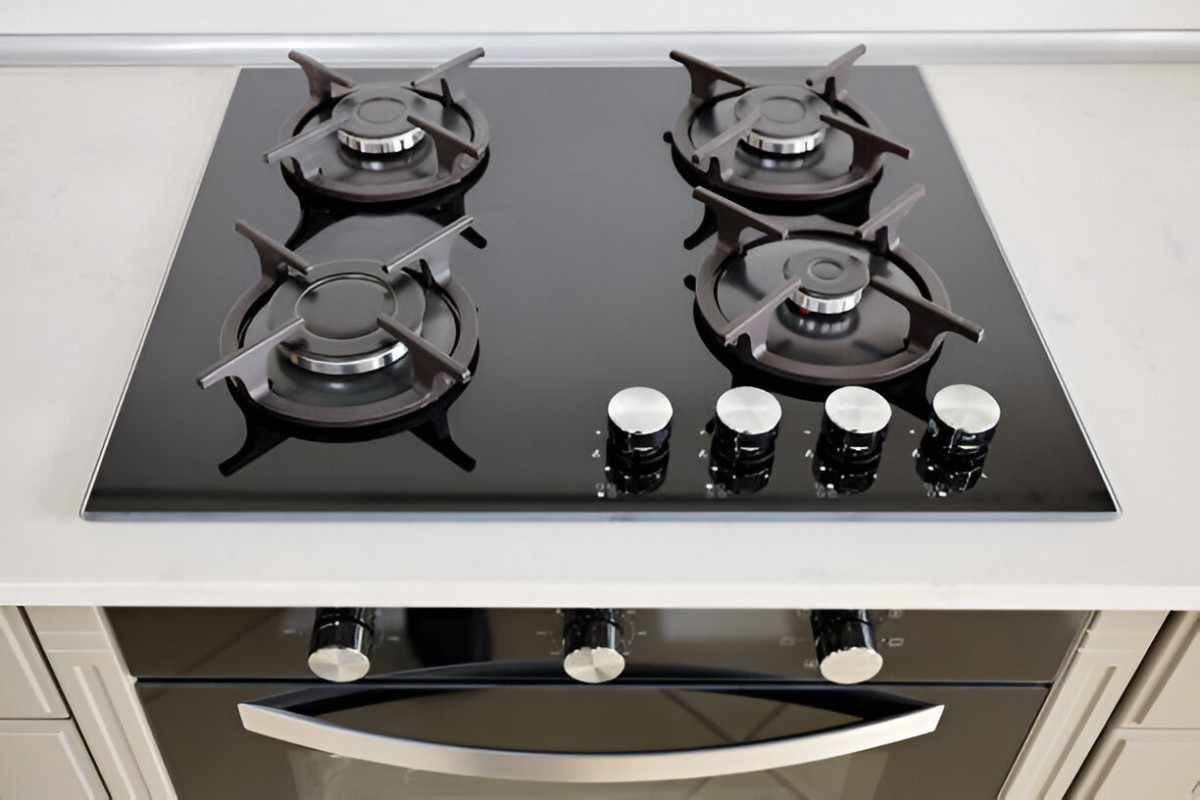When it comes to outfitting your kitchen, few decisions are as important as choosing the right gas stove. A gas stove is more than just a cooking appliance—it’s the heart of your kitchen, where meals are prepared for loved ones and where the magic of cooking happens every day. Having the right gas stove can make a huge difference in how you cook, how much you enjoy the process, and how well your meals turn out.
In this guide, I’ll walk you through everything you need to know about selecting the best gas stove for your needs, from the basics of gas stove operation to how to compare different models and features. I’ve broken it down into easy-to-understand sections, so whether you’re a first-time buyer or just looking to upgrade, you’ll find all the information you need.
Table of Contents
1. Understanding Gas Stoves
Before diving into the specifics of choosing a gas stove, it’s important to understand the basics of how they work. A gas stove operates by igniting a fuel source—natural gas or propane—that’s piped directly into the stove. This creates a flame that heats up the cookware placed on the burners.
There are two main types of gas stoves:
- Natural Gas Stoves: These connect directly to the municipal gas supply. They are more common in urban areas and often more economical.
- Propane Gas Stoves: These are used in areas where natural gas is not available. They use propane tanks that need to be refilled.
When selecting a gas stove, it’s essential to make sure that you choose one that is compatible with the type of gas available to you.
2. Key Features to Consider
There are several features to look for when choosing a gas stove, depending on your cooking needs. I’ve broken down these key features so you can evaluate each option more easily.
Burner Configuration
The configuration of burners on a gas stove is one of the most important things to consider. Most gas stoves offer multiple burner options, and the arrangement can vary greatly depending on the model.
- Standard Burners: Typically found on entry-level models, these burners offer a single heat output.
- High-Output Burners: These burners are perfect for tasks that require a higher heat, such as boiling large pots of water or cooking dishes that need intense heat.
- Simmer Burners: These burners are designed for low-heat cooking, such as simmering sauces or keeping food warm.
- Power Burners: These burners provide an even, high-powered flame for fast cooking.
Here’s a comparison of different burner types and their uses:
| Burner Type | Ideal For | Heat Output (BTU) |
|---|---|---|
| Standard Burner | Everyday cooking, moderate heat dishes | 7,000 – 9,000 |
| High-Output Burner | Fast cooking, boiling water quickly | 12,000 – 15,000 |
| Simmer Burner | Low heat, simmering, warming food | 3,000 – 5,000 |
| Power Burner | Stir-frying, searing meat, quick boiling | 15,000 – 20,000 |
Oven Size and Features
When choosing a gas stove, you also need to think about the oven size. Whether you bake frequently or not, the oven is an essential part of your gas stove setup. Most models come with ovens that range in size from 4.0 to 6.0 cubic feet, with the larger capacity being more suitable for big families or frequent bakers.
Other oven features you might want to consider include:
- Self-Cleaning Function: A self-cleaning oven can save you a lot of time and effort. It uses high heat to burn away food particles, leaving the oven spotless.
- Convection: A convection oven uses a fan to circulate heat, ensuring even cooking and faster cooking times.
- Temperature Control: Precision temperature control can help you avoid overcooking or undercooking.
Control Knobs and Digital Features
How easy is it to control the stove and the oven? The control knobs should be comfortable to use and intuitive. Gas stoves usually have either manual knobs or digital controls.
- Manual Knobs: These are the most common. They give you full control over the flame, but they do require a little more effort.
- Digital Controls: Some gas stoves have touchscreens or digital interfaces that allow for precise temperature adjustments. These are more modern and might be more intuitive for those who prefer a high-tech experience.
Ignition System
The ignition system in your gas stove determines how the gas is lit. There are two main types:
- Manual Ignition: This requires you to use a match or lighter to ignite the burner.
- Electric Ignition: This is the most common in modern gas stoves and uses a spark to ignite the gas automatically when you turn the knob.
Electric ignition systems are more convenient and safer, as they eliminate the need for an open flame to start the burners.
3. Choosing the Right Size
Gas stoves come in a variety of sizes to fit your kitchen’s layout and cooking needs. Here are the most common stove sizes:
| Stove Size | Burner Configuration | Ideal for |
|---|---|---|
| 24-Inch | 2 to 4 burners | Small kitchens, apartments |
| 30-Inch | 4 to 5 burners | Standard kitchens, moderate cooking |
| 36-Inch | 5 to 6 burners | Large families, frequent cooks |
| 48-Inch | 6 or more burners | Professional-grade kitchens |
Choosing the right stove size is crucial to make sure that it fits your kitchen layout and meets your cooking requirements. If you entertain guests frequently or have a large family, you may want to consider a larger stove with more burners. On the other hand, if you’re in a small apartment or a single-person household, a smaller stove with fewer burners might suffice.
4. Comparing Different Brands
There are many brands out there, and each offers a different combination of features, prices, and build quality. Here’s a comparison of some popular brands to give you an idea of what they offer.
| Brand | Key Features | Price Range |
|---|---|---|
| GE | Reliable, budget-friendly, basic models | $400 – $1,200 |
| Samsung | High-tech features, modern design | $600 – $2,500 |
| KitchenAid | Professional quality, stylish design | $1,200 – $4,000 |
| Wolf | Premium quality, excellent cooking performance | $4,000 – $7,000 |
| Frigidaire | Affordable, durable | $300 – $1,500 |
Each brand has its strengths, and the best choice for you depends on your priorities. If you’re on a budget, GE or Frigidaire might be great options. For high-end features and superior cooking performance, KitchenAid or Wolf would be ideal.
5. Gas Stove Safety Features
When choosing a gas stove, safety is a top priority. Here are some essential safety features to look for:
- Flame Failure Detection: This feature automatically shuts off the gas if the flame goes out, preventing dangerous gas leaks.
- Child Lock: If you have young children at home, a child lock feature on the stove can prevent them from accidentally turning on the burners.
- Auto Shut-Off: Some models will turn off the burners after a set period of inactivity to prevent overheating or gas leaks.
- Cool-to-the-Touch Knobs: Some newer stoves feature knobs that remain cool even while the stove is in use, reducing the risk of burns.
6. Energy Efficiency
One of the advantages of gas stoves over electric stoves is energy efficiency. Gas stoves provide instant heat, and the heat is directed right at your cookware, meaning there’s little heat loss. However, some models offer additional energy-saving features, such as:
- Sealed Burners: These help contain spills and improve burner efficiency.
- Convection Ovens: Convection ovens cook food faster, reducing overall energy use.
- Efficient Insulation: Well-insulated ovens retain heat, which means you don’t need to use as much energy to maintain temperature.
7. Budget Considerations
Gas stoves are available at various price points, so it’s important to set a budget before you begin shopping. The price of a gas stove depends on several factors, including brand, features, and size. On average, you can expect to pay:
- Budget Models: $300 – $800
- Mid-Range Models: $800 – $1,500
- High-End Models: $1,500 and up
Remember that while higher-end models may offer more features, you don’t necessarily need to break the bank for a good gas stove. Many budget-friendly options provide excellent performance without the extra bells and whistles.
Conclusion
Choosing the best gas stove for your kitchen is a big decision, but with the right research and knowledge, you can make an informed choice that suits your cooking style, kitchen space, and budget. Focus on the key features that matter most to you, such as burner configuration, oven size, ignition system, and safety features. Don’t forget to compare brands and consider the overall quality and reliability of the stove.
No matter what you choose, a gas stove is an investment in your kitchen that will provide years of cooking enjoyment. Take your time, evaluate your options, and choose a model that will enhance your cooking experience for years to come. Happy cooking!





